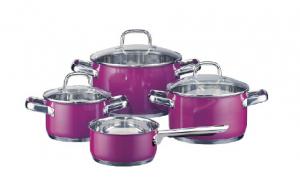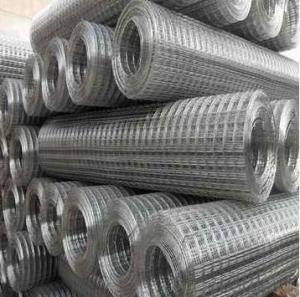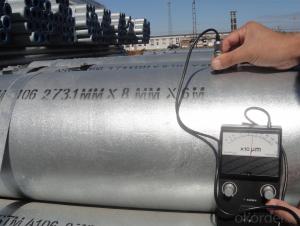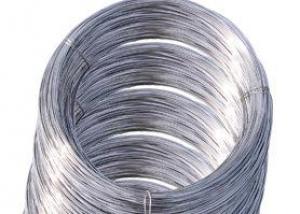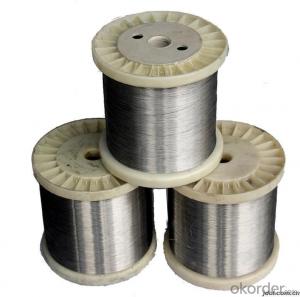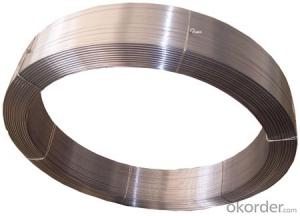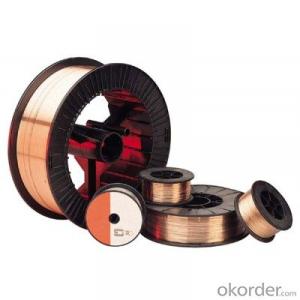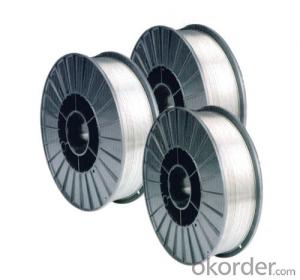1/4 Stainless Steel Rod
1/4 Stainless Steel Rod Related Searches
Best Paint For Stainless Steel Blanket Insulation For Steel Buildings Primer For Galvanized Steel Foam Filter For Stainless Steel H S Code For Stainless Steel Surface Grinding Wheels For Stainless Steel Surface Grinding Wheels For Hardened Steel Hole Saw For Stainless Steel Paint For Stainless Steel Stainless Steel For BbqHot Searches
Steel Mesh Panels For Sale Price For Stainless Steel Scrap Scrap Price For Stainless Steel Price For Stainless Steel Stainless Steel Tank For Sale Stainless Steel Sheets For Sale Cheap High Tea Sets For Sale Stainless Steel Tanks For Sale Stainless Steel For Sale High Density Fiberboard For Sale Solar Hot Water Collectors For Sale Scaffolding For Sale In Uae Scaffolding For Sale In Ireland Scaffolding For Sale In Houston Type Of Inverter For Solar Price Of Shipping Containers For Sale Types Of Inverter For Solar Stock Price For Aluminum Used Solar Inverter For Sale Steel Mesh Panels For Sale1/4 Stainless Steel Rod Supplier & Manufacturer from China
Okorder.com is a professional 1/4 Stainless Steel Rod supplier & manufacturer, offers integrated one-stop services including real-time quoting and online cargo tracking. We are funded by CNBM Group, a Fortune 500 enterprise and the largest 1/4 Stainless Steel Rod firm in China.Hot Products
FAQ
- When polyurethane insulation, why should use stainless steel wire or steel band fixed?
- When the pipe is cold, the pipe protection layer may have condensed water, and the wire is easy to rust.
- There are several packaging options available for stainless steel wire, depending on the specific requirements and preferences of the customer. Some of the common packaging options include: 1. Spools: Stainless steel wire is often packaged on spools, which are cylindrical devices that hold the wire in a neat and organized manner. Spools are available in various sizes and can accommodate different lengths and diameters of wire. They are designed for easy dispensing and can be used for both manual and automated wire feeding applications. 2. Coils: Coiling is another popular packaging option for stainless steel wire. Coils are typically larger in size compared to spools and are wound in a circular shape. They are commonly used for heavy-duty applications or when longer lengths of wire are required. Coils can be easily unwound and straightened for use. 3. Reels: Reels are similar to spools but are usually larger in size and can hold a higher quantity of stainless steel wire. They are commonly used for industrial applications where large volumes of wire are needed. Reels provide convenient storage and transportation of the wire, ensuring it remains well-protected and prevents tangling or damage. 4. Cut lengths: Stainless steel wire can also be packaged in cut lengths, where the wire is pre-cut into specified lengths according to the customer's requirements. This packaging option is commonly used when precise and consistent lengths of wire are needed for specific applications. Cut lengths are often bundled or packaged in boxes or bags for easy handling and storage. 5. Pallets: For bulk orders or large-scale projects, stainless steel wire can be packaged on pallets. Pallets are wooden or plastic platforms that can hold multiple spools, coils, or reels of wire securely. This packaging option is ideal for transportation and storage purposes, allowing easy loading and unloading using forklifts or pallet jacks. Overall, the choice of wire packaging option for stainless steel wire depends on factors such as the desired length, quantity, application requirements, and ease of handling. It is important to select the appropriate packaging option to ensure the wire remains in good condition and is easily accessible for use.
- In filtration applications, various types of stainless steel wire are commonly utilized. These include the following: 1. Type 304 stainless steel wire: This is the most prevalent wire type employed in filtration applications. It is a versatile and corrosion-resistant wire that offers excellent strength and durability. It is suitable for a wide range of filtration applications, including water, oil, and air filtration. 2. Type 316 stainless steel wire: This wire type is renowned for its outstanding corrosion resistance, particularly in harsh environments. It contains molybdenum, which enhances its resistance to pitting and crevice corrosion. Type 316 stainless steel wire is frequently used in applications requiring high levels of corrosion resistance, such as marine and chemical filtration. 3. Type 430 stainless steel wire: Compared to Type 304 and Type 316, this wire type is less commonly employed in filtration applications. It offers good corrosion resistance and is generally more cost-effective than the other types. Type 430 stainless steel wire is often utilized in less demanding filtration applications where cost plays a significant role. 4. Type 321 stainless steel wire: Stabilized with titanium, this wire type provides improved resistance to intergranular corrosion. It is commonly used in filtration applications involving high temperatures, such as filtering hot gases or liquids. 5. Type 410 stainless steel wire: Known for its high strength and hardness, this wire type is frequently utilized in filtration applications where mechanical strength and wear resistance are crucial, such as filtering abrasive materials. These examples illustrate the variety of stainless steel wire types employed in filtration applications. The selection of wire type depends on specific filtration requirements, including the desired level of corrosion resistance, mechanical strength, and temperature resistance for the application.
- Yes, stainless steel wire can be used for fishing lines. Stainless steel wire is known for its strength, durability, and resistance to corrosion. These properties make it suitable for fishing in both freshwater and saltwater environments. Stainless steel fishing lines are commonly used for catching larger and more aggressive species of fish, as they can withstand the force and weight exerted by these fish. Additionally, stainless steel fishing lines are less likely to break or fray, providing anglers with a reliable and long-lasting fishing line option.
- Stainless steel wire and galvanized wire are two distinct types of wire, each with its own unique properties and characteristics. The key differences between stainless steel wire and galvanized wire lie in their composition, corrosion resistance, and applications. Composition: Stainless steel wire is made from an alloy of steel, chromium, and sometimes other elements like nickel or molybdenum. This composition gives stainless steel wire its exceptional strength, durability, and resistance to corrosion. On the other hand, galvanized wire is made from carbon steel wire that is coated with a layer of zinc. This zinc coating provides galvanized wire with protection against rust and corrosion. Corrosion Resistance: Stainless steel wire is highly resistant to corrosion, making it suitable for various outdoor applications and harsh environments. It can withstand exposure to moisture, chemicals, and extreme temperatures without losing its integrity. Galvanized wire, although it offers some corrosion resistance due to its zinc coating, is not as resistant as stainless steel wire. Over time, the zinc coating may wear off, leaving the underlying steel susceptible to rust and corrosion. Applications: Due to its superior corrosion resistance and strength, stainless steel wire is commonly used in industries such as construction, marine, automotive, and aerospace. It is utilized for applications that require high durability, such as fencing, springs, cables, and wires used in surgical instruments or food processing equipment. Galvanized wire, on the other hand, is often used in applications where corrosion resistance is not the primary concern, such as wire mesh, binding or tying material, or in the construction of fences and cages. In summary, stainless steel wire and galvanized wire differ significantly in terms of their composition, corrosion resistance, and applications. While stainless steel wire is known for its exceptional strength and resistance to corrosion, galvanized wire offers some corrosion resistance but is not as durable or long-lasting as stainless steel wire. The choice between these two wires depends on the specific requirements of the intended application.
- Indeed, wire forms can be crafted using stainless steel wire. Renowned for its robustness, longevity, and ability to withstand corrosion, stainless steel wire is widely favored across multiple fields. It boasts effortless flexibility, enabling it to be effortlessly molded and contoured into diverse shapes and configurations, rendering it perfect for the fabrication of wire forms including sculptures, jewelry, and industrial components. Furthermore, stainless steel wire grants an exquisite and refined appearance, rendering it an appealing choice for ornamental and artistic endeavors.
- There are several different types of stainless steel wire shelves available on the market today. 1. Standard Wire Shelves: These are the most common type of stainless steel wire shelves and are typically used in residential and commercial kitchens. They feature a grid-like design with evenly spaced wires that allow for maximum airflow and visibility. These shelves are versatile and can be used to store a wide range of items. 2. Solid Shelves: Solid stainless steel wire shelves are designed with a solid metal surface instead of the traditional wire grid. This type of shelf is ideal for storing smaller items that may fall through the gaps in standard wire shelves. Solid shelves are often used in healthcare facilities, laboratories, and other environments where cleanliness and hygiene are of utmost importance. 3. Slanted Shelves: Slanted stainless steel wire shelves are designed with an angled surface that allows items to be displayed at an inclined angle. These shelves are commonly used in retail settings, such as grocery stores or convenience stores, to showcase products like fruits, vegetables, or baked goods. The slanted design ensures that items are easily visible and accessible to customers. 4. Corner Shelves: Corner stainless steel wire shelves are specifically designed to fit into corners or other tight spaces. These shelves are a great solution for maximizing storage space in small kitchens or offices. They can be used to store a variety of items, from kitchen appliances and utensils to office supplies and files. 5. Mobile Shelves: Mobile stainless steel wire shelves are equipped with wheels or casters, allowing them to be easily moved from one location to another. These shelves are commonly used in commercial kitchens, hospitals, or warehouses where frequent repositioning or cleaning is required. Mobile shelves provide flexibility and convenience, making them a popular choice in industries that require adaptability. Overall, the different types of stainless steel wire shelves cater to various storage needs and environments. Whether you need a standard, solid, slanted, corner, or mobile shelf, there is a stainless steel wire shelf available to suit your specific requirements.
- The cost of stainless steel wire can vary depending on various factors such as the grade, diameter, and quantity required. Generally, stainless steel wire tends to be more expensive compared to other types of wire such as carbon steel or galvanized wire. This is primarily due to the higher cost of raw materials and the added benefits that stainless steel offers. Stainless steel wire is known for its corrosion resistance, durability, and ability to withstand high temperatures, which makes it suitable for a wide range of applications in industries such as construction, automotive, and aerospace. While the initial cost of stainless steel wire may be higher, its long-term performance and durability often make it a cost-effective choice in the long run. It is important to consider the specific requirements of your project and consult with suppliers to get accurate pricing information for stainless steel wire and compare it with other options to make an informed decision.


























